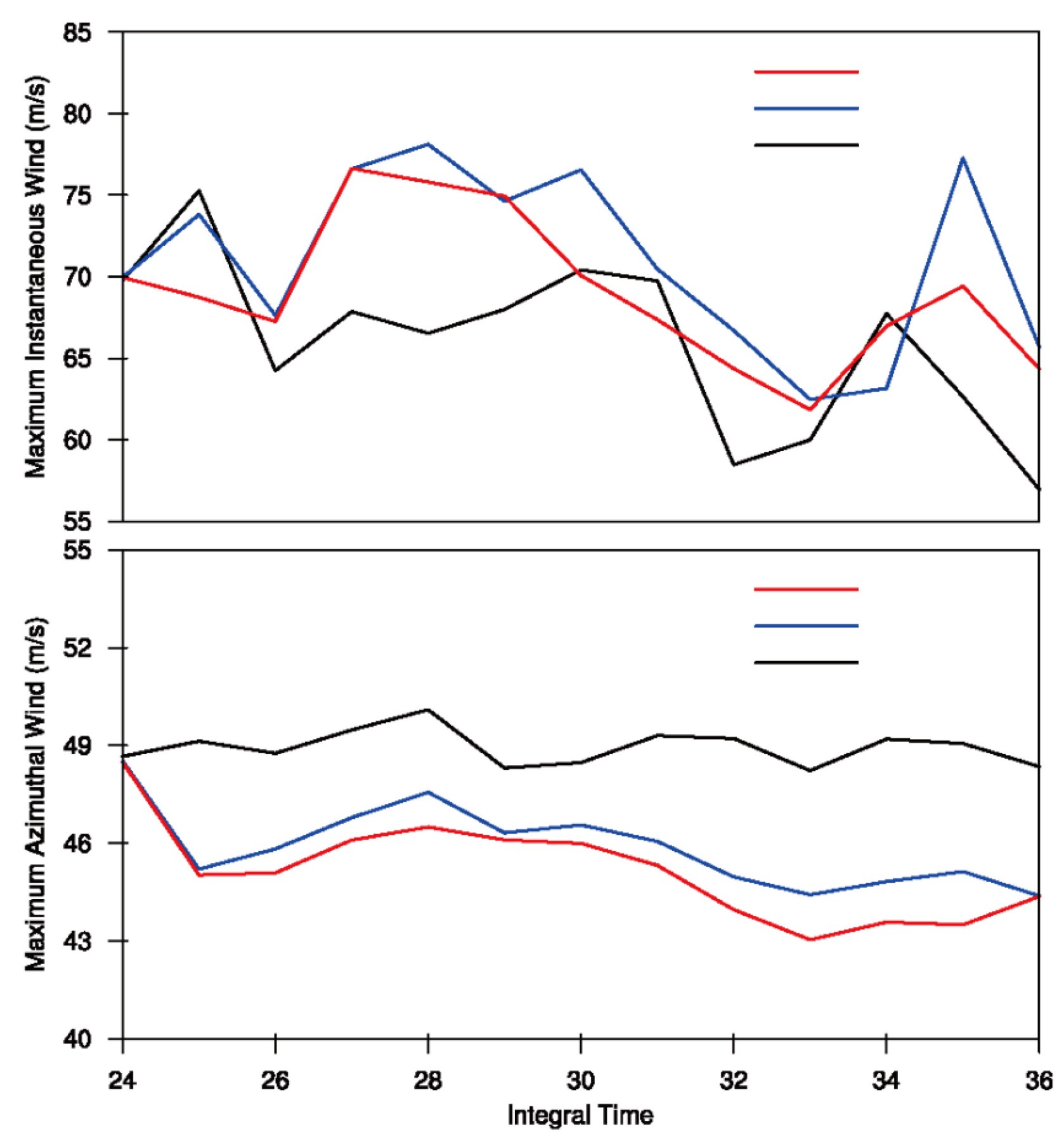| [1] |
OOYAMA K. Numerical simulation of the life cycle of tropical cyclones[J]. J Atmos Sci, 1969, 26(1): 3-40.
|
| [2] |
OOYAMA K. Conceptual evolution of the theory and modeling of the tropical cyclone[J]. J Meteor Soc Japan, 1982, 60(1): 369-380.
|
| [3] |
EMANUEL K A. An air-sea interaction theory for tropical cyclones. Part Ⅰ: Steady-state maintenance[J]. J Atmos Sci, 1986, 43(6): 585-605.
|
| [4] |
EMANUEL K A. The maximum intensity of hurricanes[J]. J Atmos Sci, 1988, 45(7): 1 143-1 155.
|
| [5] |
EMANUEL K A. Sensitivity of tropical cyclones to surface exchange coefficients and a revised steady-state model incorporating eye dynamics[J]. J Atmos Sci, 1995, 52(22): 3 969-3 976.
|
| [6] |
EMANUEL K A. Some aspects of hurricane inner-core dynamics and energetics[J]. J Atmos Sci, 1997, 54(8): 1 014-1 026.
|
| [7] |
SMITH R K, MONTGOMERY M T, VOGL S. A critique of Emanuel's hurricane model and potential intensity theory[J]. Quart J Roy Meteor Soc, 2008, 134(632): 551-561.
|
| [8] |
MONTGOMERY M T, SMITH R K. Comments on"Revisiting the balanced and unbalanced aspects of tropical cyclone intensification"[J]. J Atmos Sci, 2018, 75(7): 2 491-2 496.
|
| [9] |
GRAY W M, SHEA D J. The hurricane's inner core region Ⅱ. Thermal stability and dynamic characteristics[J]. J Atmos Sci, 1973, 30(8): 1 565-1 576.
|
| [10] |
WILLOUGHBY H E. Gradient balance in tropical cyclones[J]. J Atmos Sci, 1990, 47(2): 265-274.
|
| [11] |
BELL M M, MONTGOMERY M T. Observed structure, evolution, and potential intensity of category 5 Hurricane Isabel(2003) from 12 to 14 September[J]. Mon Wea Rev, 2008, 136(6): 2 023-2 046.
|
| [12] |
ZHANG D L, LIU Y, YAU M K. A multiscale numerical study of Hurricane Andrew(1992). Part Ⅳ: Unbalanced flows[J]. Mon Wea Rev, 2001, 129(1): 92-107.
|
| [13] |
LIU Y, ZHANG D L, YAU M K. A multiscale numerical study of Hurricane Andrew (1992). Part Ⅰ: Explicit simulation and verification[J]. Mon Wea Rev, 1997, 125(12): 3 073-3 093.
|
| [14] |
WU L, LIU Q, LI Y. Prevalence of tornado-scale vortices in the tropical cyclone eyewall[J]. Proceedings of the National Academy of Sciences (PNAS), 2018, 115(33): 8 307-8 310.
|
| [15] |
WU L, CHEN X. Revisiting the steering principle of tropical cyclone motion in a numerical experiment[J]. Atmos Chem Physics, 2016, 16(23): 14 925-14 936.
|
| [16] |
QIN N N, ZHANG D L, MILLER W, et al. On the rapid intensification of Hurricane Wilma (2005). Part Ⅳ: Inner-core dynamics during the steady radius of maximum wind stage[J]. Quart J Roy Meteor Soc, 2018, 144(717): 2 508-2 523.
|
| [17] |
WEATHERFORD C L, GRAY W M. Typhoon structure as revealed by aircraft reconnaissance. Part Ⅰ: Data analysis and climatology[J]. Mon Wea Rev, 1988, 116(5): 1 032-1 043.
|
| [18] |
RYGLICKI D R, HART R E. An investigation of center-finding techniques for tropical cyclones in mesoscale models[J]. Journal of Applied Meteorology and Climatology, 2015, 54(4): 825-846.
|
| [19] |
NGUYEN L T, MOLINARI J, THOMAS D. Evaluation of tropical cyclone center identification methods in numerical models[J]. Mon Wea Rev, 2014, 142(11): 4 326-4 339.
|
| [20] |
YANG H, WU L, XIE T. Comparisons of four methods for tropical cyclone center detection in a high-resolution simulation[J]. J Meteor Soc Japan, 2020, 98(2): 379-393.
|
| [21] |
吴立广, 刘青元, 周星阳. 热带气旋边界层精细结构研究综述[J]. 气象科学, 2020, 40(1): 1-10.
|
| [22] |
MADDOX R A. An objective technique for separating macroscale and mesoscale features in meteorological data[J]. Mon Wea Rev, 1980, 108(8): 1 108-1 121.
|
| [23] |
BRYAN G H., ROTUNNO R. The maximum intensity of tropical cyclones in axisymmetric numerical model simulations[J]. Mon Wea Rev, 2009, 137(6): 1 770-1 789.
|
| [24] |
ZHANG J A, ROGERS R F, NOLAN D S, et al. On the characteristic height scales of the hurricane boundary layer[J]. Mon Wea Rev 2011, 139(8): 2 523-2 535.
|
| [25] |
SMITH R K, MONTGOMERY M T, SANG N V. Tropical cyclone spin-up revisited[J]. Quart J Roy Meteor Soc, 2009, 135(642): 1 321-1 335.
|






 下载:
下载:










 粤公网安备 4401069904700003号
粤公网安备 4401069904700003号